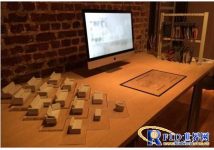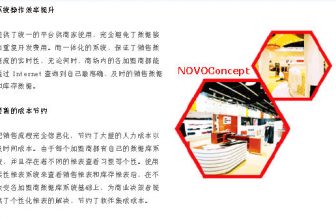
Established department stores use 3D printing + RFID technology to enhance consumer experience
[ad_1]
Recently, a special service appeared in the household goods section of John Lewis, a well-known department store in London. They called it interactive sofa studio (interactivesofastudio), which is a prototype tool that is mainly improved by 3D printed sofa models and RFID technology. The consumer’s in-store experience.

The purpose of the interactive sofa studio is to help customers design personalized sofas. It includes a variety of 3D printed sofa models and standard color panels, but these are all installed with RFID passive tags.
It works like this: Consumers can put the sofa model and color palette of their choice on the desktop.ReaderThe system will read the PFID tag information in the designated area on the screen, and display the sofa effect of the designated style and fabric color on the display for consumers to choose.

John Lewis is a 150-year-old veteran retailer, but the company has never stopped pursuing innovation. Not long ago, the company launched a project called JLAB2, which invited up to 10 technology companies to come up with their most creative solutions to improve the company’s business practices.
These programs will be piloted under the supervision of JohnLewis, and the final winner will get nearly $150,000 in funds to sign a contract with the retailer. JohnVary, the innovation manager of JohnLewis, said that the purpose of this incubator-like idea is to improve the company’s performance and look forward to solving the main challenges faced by retailers.
“The important thing is that we set the boundaries for them and said, OK, we hope you can come up with something in this regard.” Vary said.
The JLab project is open to all individuals, companies, start-ups and mature companies. According to Tiangong’s understanding, most of the plans will be carried out in an area called RoomY designated by the company in the store. This is Vary’s creativity. He calls it a way to integrate software developers, interactive designers and engineers. A place where the latest ideas quickly become reality. Interactive sofa studio is one of the projects in RoomY, this month it will be tested in John Lewis store on Oxford Street in London.
Vary said that the interactive sofa studio took 12 weeks to develop. The development team created the “reader” using 3D printing and laser cutting technology. In the next 12 weeks, this device and system will be used to interact with more than 65,000 consumers.
[ad_2]






